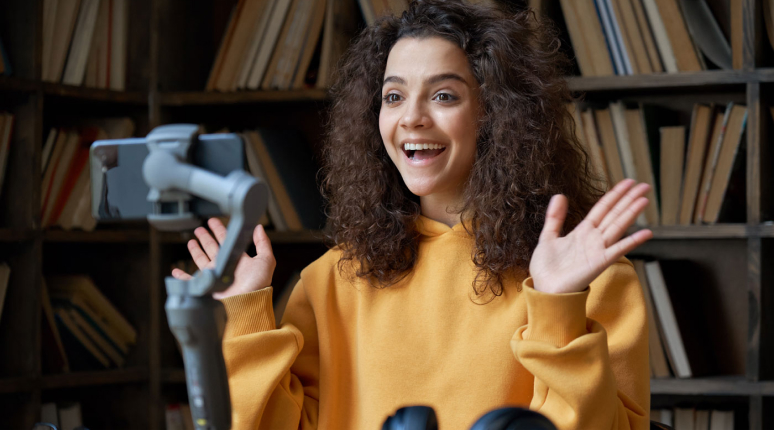Livestreaming is a way for people to broadcast themselves online. Apps such as Instagram, Facebook, TikTok, Twitch and YouTube all offer livestreaming services.
Questions you may have
People use livestreaming to broadcast live video footage of themselves to others, usually their friends/family or the general public. This could be something specific such as playing an online game alongside a voiceover or a more general day-to-day run through of their lives.
Celebrities, influencers or vloggers may use it to communicate with their fans or to spread messages, including advertising and marketing.
Livestreaming is also used to communicate to the world what is happening at a specific moment in time. For example, to document breaking news stories on large media channels.
Lots of people enjoy watching livestreams from their friends as well as celebrities and popular online personalities. They can be exciting and help you feel like you are a part of something. Some people host their own livestreams, which can be an easy way to broadcast live video footage to their friends and followers.
Hosting your own livestream can be a really enjoyable experience, however there are a few things to consider to make sure you are safe:
- Remember to not share any personal information through what you say, the things you show or even clues in the background.
- Think about who can view your livestream and remember, even if you do use privacy settings, people are still able to take screenshots or recordings.
- Always think carefully before you livestream. Even though you might be able to edit content afterwards, whoever was watching it live will have seen the original version. While you can remove a livestream after it has ended there is still the chance that someone else may have made a copy of it.
When something is live you can never know exactly what you will see or hear – always talk to an adult you know and trust if you see or hear something upsetting. Lots of livestreaming services also have a chat function for interaction and you could be talking to people who you do not know. It’s important to be aware of what you are sharing, making sure you don’t reveal any personal information. Another risk to consider is how reliable the content is. Vloggers and celebrities may use livestreams to advertise products or share opinions. Always think about the motive behind what you are being told.
Accidents happen and if you do reveal something personal during a livestream then it is important to delete this footage straight away. This doesn’t mean that this has now disappeared as whoever was watching at the time would have seen this and it could have been recorded. However this is unlikely if you only shared with your friends, family and people that you know. Talk to an adult you know and trust about what happened and try to use this as a learning curve. Think carefully about what you are going to share in any future livestreams.
If you know that you have upset someone or feel you may have been offensive in any way, then it could be worth reaching out to offer an apology. It’s never too late to say sorry and is a powerful way of admitting and owning your mistake. It would be a good idea to delete the livestream to avoid upsetting anyone else who may view it. Talk to an adult about what’s happened and work together to think of ways to prevent it from happening again in the future. You can also reach out to Childline or The Mix who are always there to listen and support, whatever the issue.
Unfortunately, livestreaming can be used by online bullies to deliberately target or harass others to upset or humiliate them. Please remember this is not your fault and there is support out there. Try to get a copy/screenshot of what is being shared around as evidence and most importantly speak to an adult that you trust. If preferred, you can also reach out to Childline or The Mix who are always there to listen and support, whatever the issue. Bullying is never okay and, for the victim, can be extremely difficult. There is more information and advice on this here. Remember to report this behaviour too.
If anything in a livestream is abusive, offensive or makes you feel uncomfortable then make sure you report it. You can report the livestream itself, plus any comments too. As well as reporting, it is a good idea to tell someone you trust about what you have experienced. This may initially be a friend, however it’s important to tell an adult you know and trust too. You could also contact Childline or The Mix if you’d prefer.
Top Tips
- Decide who you share your livestream with. Think about who may be able to join and view your livestream and make use of privacy settings to manage this.
- Protect your personal information when livestreaming– remember things can be easily given away by what you say or show on video or from clues in the background.
- Think carefully before watching a livestream. Remember you can never know exactly what you will see or hear.
- Report any inappropriate behaviour. Try to get a screenshot of the content before it expires and remember to speak to an adult you trust too.
- Use livestreaming in a positive way. As well as your own digital footprint and online reputation, always think about how your livestream will affect your viewers or other people who are captured on the video.
 As part of our work in the UK Safer Internet Centre
As part of our work in the UK Safer Internet Centre
